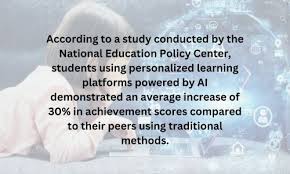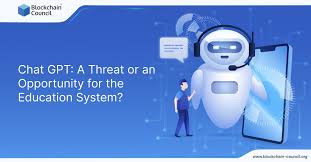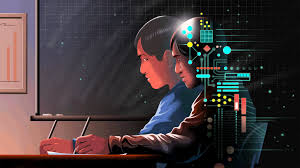A Critical Analysis : Unveiling the Impacts of Artificial Intelligence on Student Capacity
Introduction:
Artificial Intelligence (AI) has emerged as a momentous power in various regions, disturbing organizations and reshaping how we live and function. In the domain of training, Artificial intelligence holds the commitment of upgrading opportunities for growth and working on instructive results. In any case, as man-made intelligence turns out to be progressively coordinated into instructive settings, concerns possibly affect understudy limit. This basic investigation investigates the crossing point of Artificial Intelligence and understudy inadequacy, looking at both the open doors and difficulties introduced by this developing scene.

1. Open doors for Customized Learning:
One of the essential benefits of computer based intelligence in schooling is its capacity to customize growth opportunities in view of individual understudy needs and inclinations. Artificial intelligence controlled versatile learning stages can investigate understudy information and give fitted suggestions and intercessions to help understudy learning. By adjusting informative substance and pacing to every understudy's extraordinary learning style and level of capability, artificial intelligence can possibly improve understudy commitment and scholarly execution.
2. Mechanization of Regulatory Assignments:
Artificial intelligence advances can likewise smooth out managerial undertakings, permitting instructors to apportion additional time and assets to educating and understudy support. Robotized reviewing frameworks, for instance, can speed up the appraisal cycle and give convenient criticism to understudies, empowering them to keep tabs on their development and recognize regions for development. Furthermore, computer based intelligence driven information examination devices can assist teachers with distinguishing examples and patterns in understudy execution, illuminating educational navigation and mediations.
3. Increased Educating and Learning:
Computer based intelligence controlled instruments and advances, like virtual guides and chatbots, can increase customary showing strategies by offering extra help and help to understudies. Virtual mentors can propose on-request coaching and customized direction, while chatbots can address understudy questions and give prompt criticism. By utilizing simulated intelligence driven apparatuses, instructors can make more intuitive and drawing in opportunities for growth that take care of different understudy needs and inclinations.
4. Worries about Reliance and Overreliance:
In spite of the likely advantages of simulated intelligence in training, there are worries about the propensity for understudies to turn out to be excessively subject to artificial intelligence driven devices and advancements. Over the top dependence on man-made intelligence for learning and critical thinking might subvert decisive reasoning abilities and thwart understudies' capacity to think freely and innovatively. Besides, the commodification of instruction through computer based intelligence driven stages might sustain a culture of lack of involvement and industrialism among understudies.
5. Value and Access Contemplations:
Another basic concern is the potential for simulated intelligence to fuel existing imbalances in schooling. Admittance to artificial intelligence controlled apparatuses and advances might be unevenly dispersed, with understudies from special foundations benefiting lopsidedly. Besides, artificial intelligence calculations may incidentally sustain predispositions and variations, prompting discriminatory results for minimized understudy populaces. Tending to these value and access contemplations is fundamental for guaranteeing that artificial intelligence improves, instead of fuels, instructive disparity.

6. Moral and Security Suggestions:
The far and wide reception of man-made intelligence in schooling raises significant moral and protection contemplations. Simulated intelligence calculations might gather and examine immense measures of understudy information, raising worries about protection breaks and information security. In addition, the utilization of simulated intelligence driven observation advancements, for example, facial acknowledgment frameworks, in instructive settings might encroach upon understudies' freedoms to protection and independence. Protecting understudy information and guaranteeing moral man-made intelligence rehearses are fundamental to alleviating these dangers.
7. Developing Computerized Education and Decisive Reasoning:
In exploring the intricacies of man-made intelligence in training, focusing on the advancement of understudies' computerized proficiency and decisive reasoning skills is basic. Teachers assume a urgent part in cultivating understudies' capacity to fundamentally assess data, observe believable sources from falsehood, and explore moral difficulties connected with simulated intelligence. By enabling understudies with the vital abilities and capabilities, schooling can act as a rampart against the likely traps of computer based intelligence reliance.

Conclusion:
As computer based intelligence keeps on pervading instructive conditions, it is fundamental to look at its effects on understudy limit basically. While man-made intelligence holds the commitment of customized learning, authoritative effectiveness, and expanded educating and opportunities for growth, concerns persevere about reliance, value, morals, and protection. By tending to these difficulties and outfitting the capability of simulated intelligence mindfully, teachers can use innovation to engage understudies and upgrade their ability for deep rooted learning and outcome in the computerized age.



You must be logged in to post a comment.